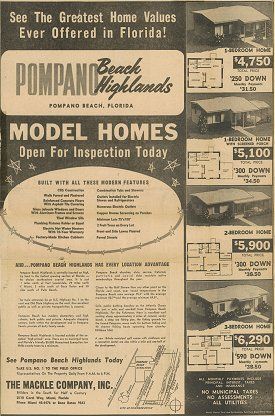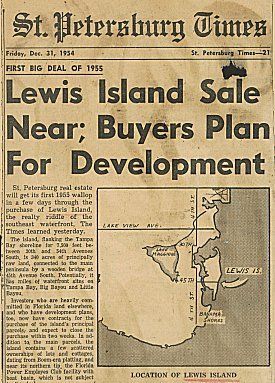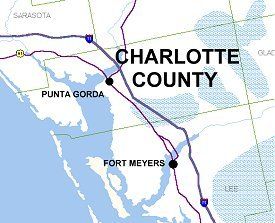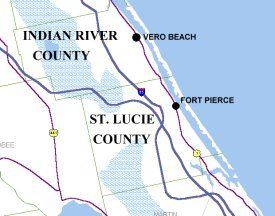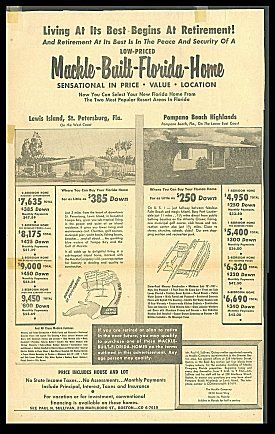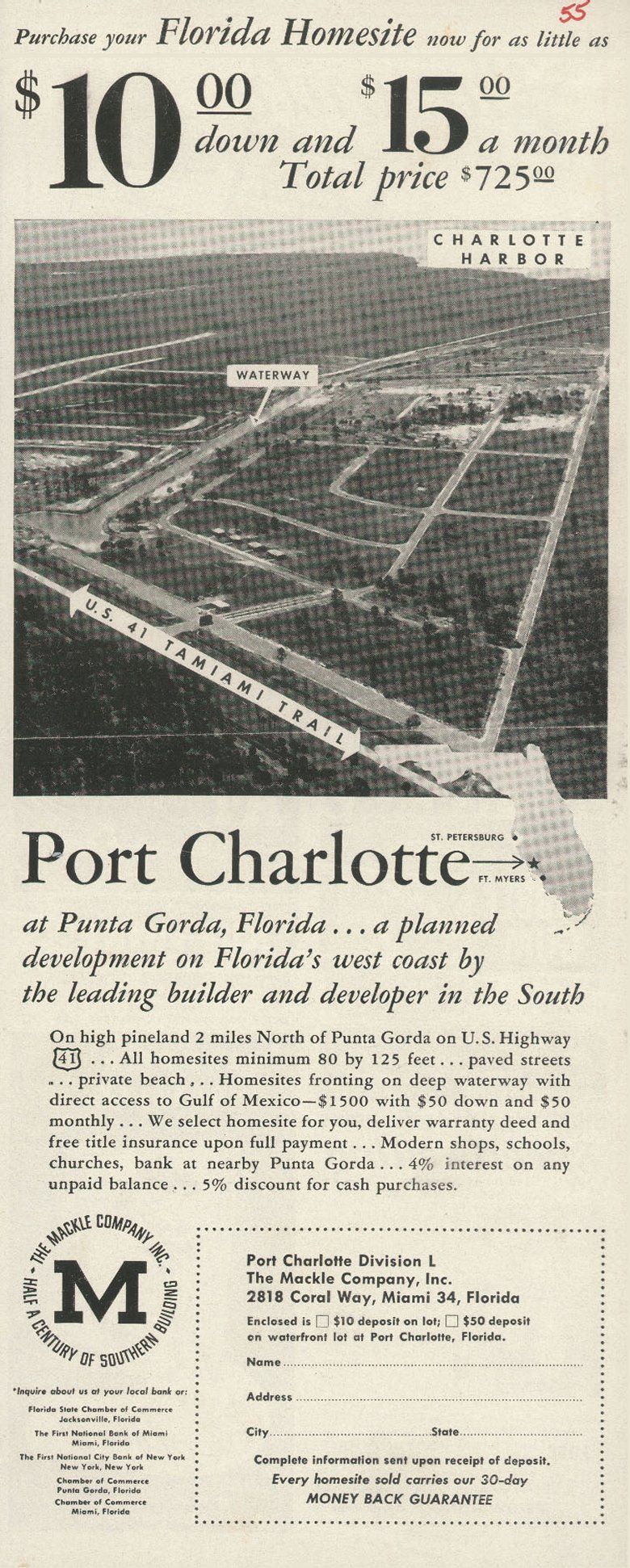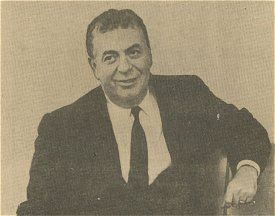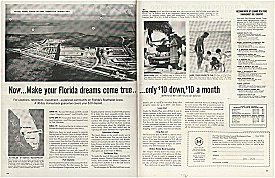GENERAL DEVELOPMENT
GENERAL DEVELOPMENT CORP.
1954 was a pivotal year.
The Mackle Brothers were about to make their entrance on a much larger stage.
Even while the planning and opening of Westwood Lakes was under way the curtain was going up.
During 1954 the Mackles entered into four fifty - fifty partnerships with Florida Canada Corporation. They new ventures were:
Pompano Beach Highlands, Inc.
The sole asset of this venture at the outset was 1,530 acres of land on both sides of Federal Highway (U.S.#1) in north Broward County. North Broward County was still largely undeveloped in those days and the property was a country drive away from the nearest city - Fort Lauderdale.
The property on the west side of Federal Highway would be developed as the community of Pompano Beach Highlands. The property east of Federal Highway would become Pompano Waterway Estates.
In total 4,500 homes were planned - making it the biggest undertaking to date for the Mackles. It was also the first project opened outside of Dade County in the post war years.
Pompano Beach Highlands was a traditional housing project. It was very similar in size and even used the same house plans as the Mackles - wholly owned - Westwood Lakes., Even the advertising and the promotion of the property was nearly the same. In 1957 the Pompano project featured a Home Show with and rocket at the entrance almost identical to the one at Westwood.
Pompano Beach Highlands opened August 1, 1954 about four months before Westwood. Both found a huge demand for the Mackle-Built homes. At Pompano about 500 homes a year would be sold each year for the next three years.
Pompano Waterway Estates - on the east side of Federal Highway was opened for sale January 15, 1956. About 40% of the Pompano property holdings - including Pompano Waterway Estates - were sold to other builders in 1956 and 1957 as the Mackle's focus turned in other directions.
Lewis Island, Inc.
This venture was formed with the acquisition in 1954 of 340 acres on the west side of Tampa Bay near St. Petersburg in Pinellas county. The property would be planned as the community of Lewis Island and opened in early 1955.
The St. Petersburg Times described the property:
"The island, flanking the Tampa Bay shoreline for 7,500 feet between 30th and 54th Avenues South, is principally raw land, connected to the peninsula by a wooden bridge at 45th Avenue South. Potentially, it has miles of waterfront sites on Tampa Bay, Big Bayou and Little Bayou."
The paper reported that the price was "believed to average around $1,000 an acre for the undeveloped land."
Port Charlotte, Inc.
Florida Canada's subsidiary - Florida West Coast Land - and their 20% partners, Buck Buchanan and Brad Streit held options on 80,000 acres of land in Charlotte County. Florida. The land was made available to the Port Charlotte Inc. venture on an "as needed" basis for the development of a housing project.
Port Charlotte - as a housing only project marketed in the local area only - was very slow going at first. In the early stages only a small part of the acreage available was planned for development.
Later events would change the pace of sales dramatically and all of the acreage - and more - would eventually be incorporated into the new community.
General Development Corp.
Also acquired in 1954 - in the newly formed General Development Corp. venture - were two small properties in Indian River County and St. Lucie County.
In Indian River County - on the mainland just east of downtown Vero Beach - the venture owned 20 acres. The land would be developed as Belmont Park.
In St. Lucie County a parcel of 20 acres would become Indian Hills Estates.
While this venture started out as the smallest of the four, the corporate name would eventually embrace all of the Mackle Brothers activities for the next eight years. And the small initial forays into Indian River and St. Lucie Counties would each blossom into major new community opportunities on property to be acquired over the next three to four years.
The Mackle Brothers ran the four companies in tandem with their own project of Westwood Lakes. Westwood would continue to be operated separately until it was sold out late in the decade.
So the Mackle Brothers - in 1954 - had expanded outside of Dade County and were now operating in six different Florida locations.
History of Florida Canada Corporation
Florida Canada Corporation was a publicly traded company listed on the American Stock Exchange.
Formed in 1928 as Chemical Research Corporation the company later changed its name to Florida Canada Corporation.
The company's original business was the development of new technological processes and equipment for the petroleum industry.
By 1954 the company's primary investment was in Maule Industries, a large cement and building materials supplier.
In 1954 the four fifty fifty partnerships with the Mackles were formed.
In November 1954 the company sold most of its holdings in Maule to Ponce Cement Corporation.
From 1954 forward Florida Canada's primary business was the partnership with the Mackles - and their role was purely that of financier. They had a few other - non operating - assets including receivable from the Maule sale, stock in a mining company, mining claims and leases, chrome aluminum patent rights, and oil lease equipment.
In 1956 the four partnerships with Florida Canada were merged into one 50/50 partnership under the banner of: General Development Corp.
In 1958 the Mackles would merge their 50% interest in General Development Corp. into Florida Canada Corporation and take over its management.
At the same time, Florida Canada would change its name to General Development Corporation.
A NEW BUSINESS!
With the financial backing of Florida Canada, the Mackles were really stretching their legs!
Between the formations of the four partnerships in 1954 and the end of 1957 the new venture grew enormously and nature of the business changed dramatically.
All of the four original ventures were originally intended as traditional housing projects. They would be the last of that type for a long time.
One of the four, Port Charlotte would evolve into something far different.
For some time - as the post war housing boom had subsided - the Mackles had succeeded in selling homes to both workers and retirees moving to Florida as part of the great migration to the sun and surf. Like all builders, local advertising and on-site sales forces had been their sole source of generating prospects and making sales.
The Mackles were starting to experiment with some new marketing ideas however.
By the end of 1954, along with the four new ventures, there were a few early experiments with out-of-state offices selling house and lot packages.
And they had another idea.
In late 1954 they ran a quarter-page ad in the nationally distributed Saturday Evening Post for homes in Pompano Beach Highlands.
The idea was to get northerners interested in the Mackle homes before they came to Florida - and encourage them to visit the Mackles' projects when the arrived.
It was a new idea and a gamble of significant dollars.
Even the Mackle Brothers were amazed at the results!
The responses flooded in!
The only problem was ..... many of the responses indicated an interest buying a home in Florida ... upon their retirement ....
......perhaps ten years or more in the future!
Obviously the Mackles could not contract for a home to be delivered that far away.
But - they reasoned - they could sell a home site for the future construction of a retirement home.
About the same time they had been told of a developer in Long Island who was using an installment lot contract rather than a deed and mortgage for the sale of home sites there.
From this the Mackles developed the idea of selling Florida home sites by mail order.
They would sell their yet-to-be-developed Florida platted lot on an installment contract - through national advertising, brochures and coupons. When the contract was paid in full the Mackles would deed the home site to the buyer. The lot would be unimproved at the point of sale. But prior to deeding all improvements - roads, utility lines and other amenities - would be completed.
And then the lot owner could contract to have his retirement home built.
The world dreamed about living in the Sunshine State.
The Mackles had found a way to make that dream come true!
The first installment lot contracts were written at Port Charlotte in late 1955. An article published in the Miami Daily New on December 11, 1955 - titled "Mackle Building 10,000 Homes" says - almost as a footnote - "In less than a month over 200 home sites have been sold at Port Charlotte ... Offered for sale are 80' x 125' inside lots for $699.00 ..."
They could see that there was great potential for this new business. But to fulfill the apparent demand would require more land than any housing project to date.
Fortunately, such a large tract of land was available. Florida Canada - in it's Florida West Coast subsidiary - had options on 80,000 acres of land in Charlotte County. It was from this land that the first Port Charlotte, Inc. venture had been formed with about 5,000 acres.
Soon the Mackle engineers were laying out a new 80,000 acre city ... with over 200,000 home sites!
The year 1956 - the first full year of installment sales - the fifty-fifty partnership recorded home site sales of approximately $2,600,000 - more than the venture reported that year in home sales - with a far better profit margin!
It was an excellent start on their limited advertising budget.
Around this time the Mackles were introduced to another player in this saga, Lou Chesler.
Chesler was an investor and speculator from Canada. In January of 1960 Fortune magazine described him as:
"a flamboyant Toronto financier and promoter full of expansive ideas. He had made a fortune in Canadian mining stocks, engineered the controversial sale of Warner Brothers' film library to United Artists, had got in to the manufacturing of Tote systems (which automatically tote up statistics for racetrack betting), and had begun merchandising Florida land."
Chesler was intrigued by the Mackle's early installment land sales efforts.
In July of 1957 a deal was completed whereby he would purchase 520,000 shares of Florida Canada stock for 3.7 million dollars.
Chesler - who already was an investor in the company - now controlled 713,081 shares - 31.2% - of Florida Canada. With the completion of the deal he replaced Buck Buchanan as President and Chairman.
Florida Canada would use this new capital in the partnership with the Mackles. And - as a result - the Mackles would launch a much larger national advertising program.
It was the final piece of the puzzle.
The first major ad campaign for $795.00 lots in Florida for "Ten dollars down and ten dollars a month" began to be placed in 1957.
The national advertisements would include a "cut-out" coupon asking for more information about Port Charlotte.
When the coupon came in to the Miami office a brochure went out by mail to the customer with Reservation Coupons (usually three at a time) which - with the attachment of a ten dollar bill - would reserve a home site in Florida. Receipt of the Reservation Coupon and the ten dollar bill was followed up with a contract for a specific lot to be signed and returned.
The results of the new national advertising program were phenomenal!
Coupons - along with the ten dollar bills - came pouring in by the postal bag load!
Bill O'Dowd tells the story that in the early days the Mackles - giddy with their success - would actually open the envelopes themselves in the office that they shared!
Bill remembers Elliott excitedly yelling "I got triple"! - when he would find thirty dollars and three coupons in one envelope!
Soon the huge volume of returns required an entire mail order department to be set up.
The quarter page advertising experiment soon turned into a grand "mail order" land sales business. As time went on the simple ad and "fulfillment material" grew more and more sophisticated.
Soon national advertising expanded to international advertising and contracts were being mailed all over the world. I was collecting stamps at the time and a fringe benefit was that Dad would bring exotic foreign stamps home by the hundreds!
Later the mail order business was replaced by the out-of-state franchised dealer and branch office network that made the sale of land on the installment basis even more successful.
But throughout 1956 and most of 1957 land sales were made purely by mail order.
By 1957 installment land sales were a huge part of the partnership's revenue and profits.
The 1957 Florida Canada Annual report reported that land sales in the partnership totaled 15.5 million dollars in 1957 versus about 2.6 million the year before!
With the national exposure of the advertising program home sales soared as well amounting to 6.7 million in 1957 versus about 2.5 million the year prior!
Total sales were 22.2 million versus 5.1 million in 1956!
But installment land sales - a product that did not exist three years earlier - now made up 70% of the Mackles business!
